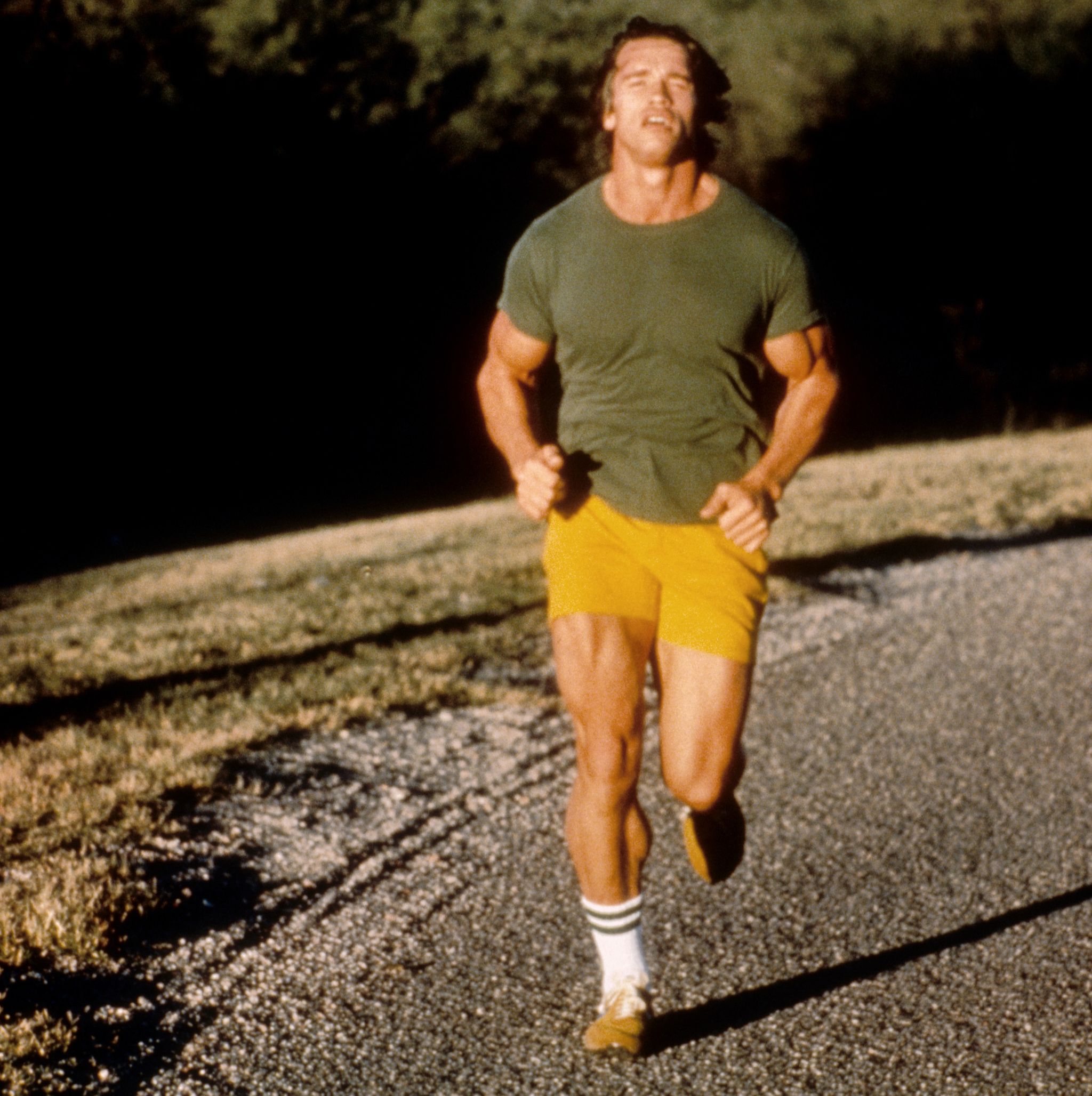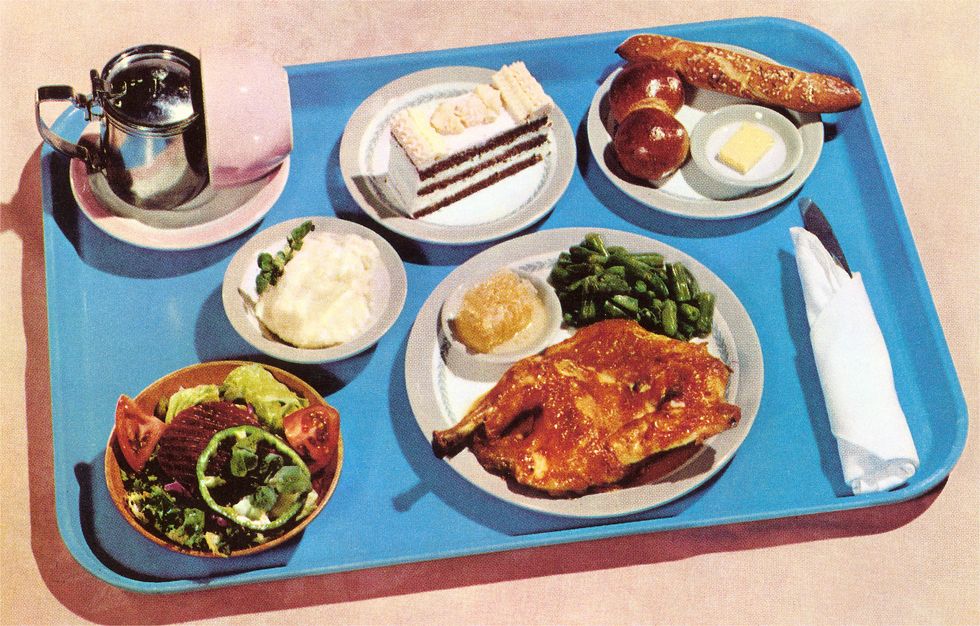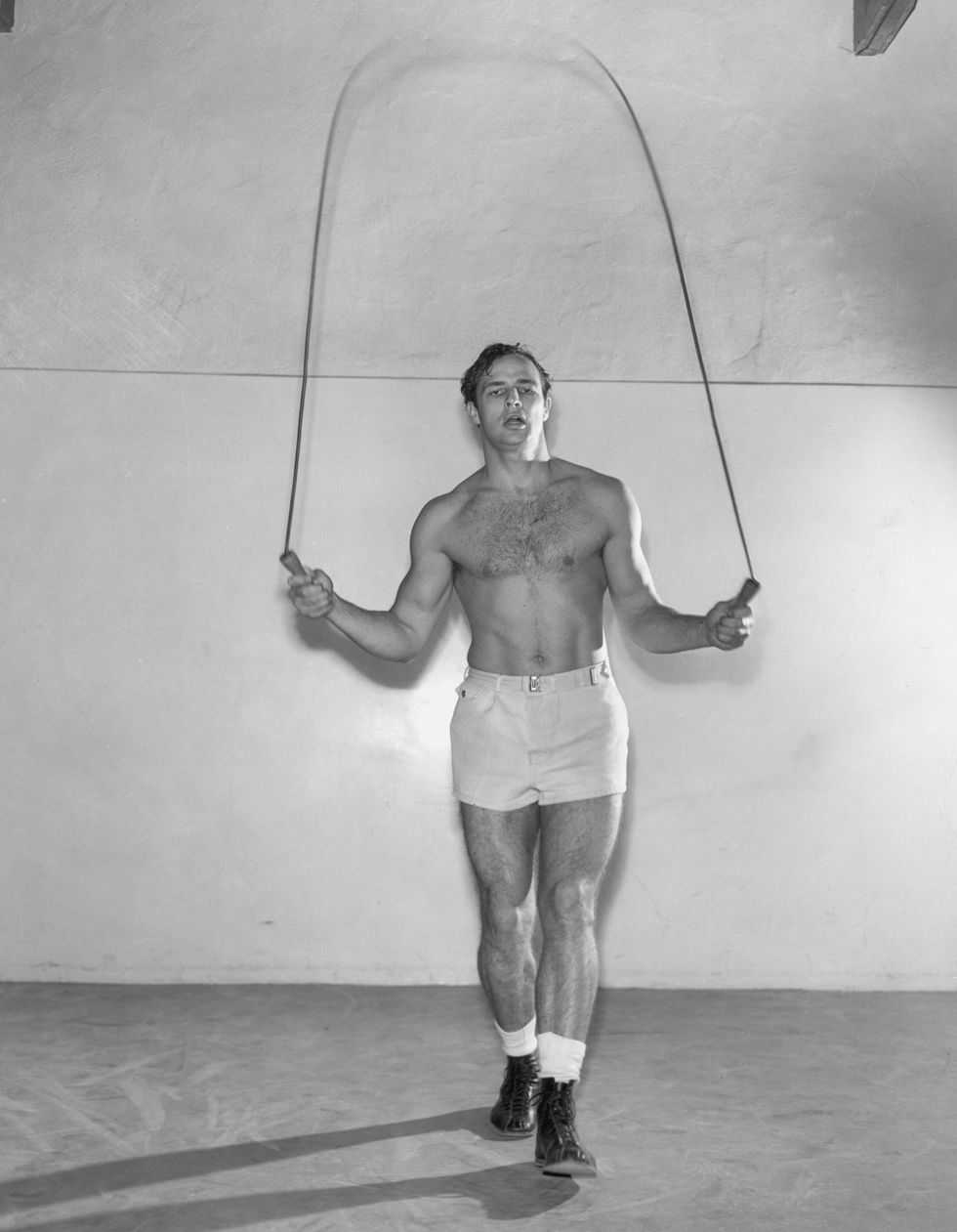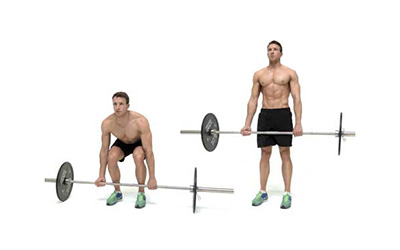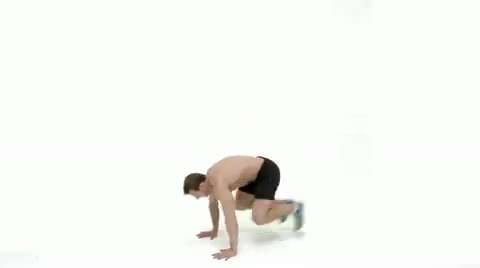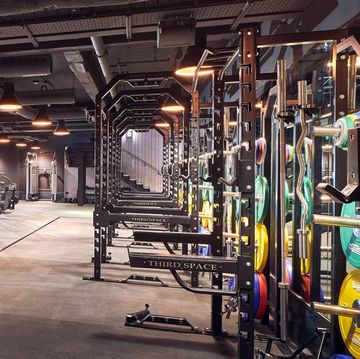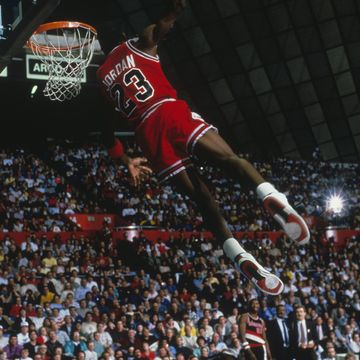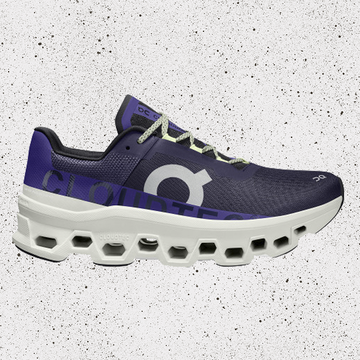We all have bits that bother us. And if you don’t, all power to you. Self-confidence is a vanishing commodity now that we're spending so long staring at our own reflection on Zoom screens (partly why, sadly, the male cosmetic surgery industry is booming). So if you are looking to tone up, then know you're among friends.
And we'd hazard a guess that you want to tone the bit that the vast majority of men want to tone – the softer-every-year rolls around your middle. Again, join the club. We’re all built differently, but in general, excess fat accumulates predominantly around men’s stomachs, explains Alex Ruani, a doctoral researcher in nutrition science education at University College London, and co-founder at the Health Sciences Academy.
“Belly fat is a way to refer to our ‘central fat’ – that is, the fat under the abdominal skin (abdominal subcutaneous fat) and fat surrounding our core organs within the abdominal cavity (visceral fat),” she says.
How much ‘central fat’ we carry is influenced by stuff that we can control – diet, stress, sleep – as well as our genes, which we can't. Which is good and bad news, as it means you've got some leverage over how much belly fat you carry, although never as much as you might hope. And you're probably carrying a little bit more than you'd like. Again, however, not entirely your fault.
“While it’s true that women tend to carry more body fat than men – on average, 10 per cent more – men tend to carry a higher percentage of visceral fat,” Ruani says. “This difference in fat distribution is mainly explained by our hormones.”
If you’ve spent any time at all looking into the best ways to lose weight, you’ll have likely heard that visceral fat = bad. This is because it puts pressure on your organs, which in turn can lead to all kinds of health complications. While that is true, Ruani wants you to know that, in moderation, it's actually a good thing.
“We actually need it," she says. "‘Omentum' is the scientific name we give to this apron of fat that protects your internal organs. This large sheet of fat stretches over your intestines, liver, and stomach like an elastic apron, and even plays a role in immunity due to small filters between the fat cells which fillet antigens and bacteria. However, when we carry too much of this fat, it can backfire and give rise to a number of cardiometabolic problems like insulin resistance and chronic inflammation around the whole body, not just the abdomen.”
Which explains why there's a point below which your body fat percentage will not drop, without you getting seriously ill.
That said, for many, there’s an obvious aesthetic pressure to lose ‘excess’ body fat, especially around the stomach. And if you are going to try to reduce your body fat, you need do it in a healthy way. To do this, you’ll want to look at three factors: lifestyle, nutrition, and exercise.
Lifestyle changes that decrease your belly fat
Often when we’re trying to lose weight (or build muscle or improve fitness) we focus on what we eat and how we exercise. Both of these are valid, and we’ll get to them later. But sometimes, underlying lifestyle issues work to undermine our progress without us even realising.
Before you decide to ditch your daily flat white in favour of metabolism-boosting green tea, think about fundamental changes you can make to support your transformation. These are the foundations that will help build solid progress not just for a quick fix, but longterm.
Squash stress
“Research indicates that high stress levels can cause you to preferentially gain abdominal fat through chronic production of the stress hormone cortisol,” says Mike Molloy, founder of M2 Performance Nutrition. “High cortisol levels increase appetite and drive abdominal fat storage. Therefore, any activity that heightens the stress response can also lead to fat gain.” This makes evolutionary sense. When we're in periods of acute stress – say, due to the threat of attack, or because all the wildebeest have disappeared – our bodies cling onto as much energy as possible. The problem is that, these days, your stress comes from your inbox, not what's out on the savannah.
The best solution to stress? That would be exercise, which in turn burns calories and helps torch fat. Another tool is meditation, and there’s a long list of mindfulness apps that will help you in that regard. Headspace is one of our favourites: it comes packed with a wide array of meditation sessions following different approaches, all designed to help you achieve some much-needed relaxation at any time of the day. Calm is also a popular choice, with a similar catalogue of sessions and personalisation options, but if you’d rather not pay a monthly fee then YouTube is full of free meditation sessions (albeit with some distinctly un-zen adverts to skip past first.) Whatever route you choose, it will also help to solve another bad health habit that can contribute to the build-up of belly fat…
Prioritise sleep
“Lack of sleep is possibly the biggest stress that people deal with on a day to day basis,” says Molloy. “A study published in the journal SLEEP found that lack of sleep correlates strongly with increases in abdominal fat in people under 40. The study found that people sleeping less than five hours a night had a 32 per cent gain in visceral fat, versus only 13 per cent in people getting seven hours per night.”
One solution is to ban laptops and phones from the bedroom (books get a pass). Set yourself a bedtime to at least actually be in bed each night, and don’t eat or exercise too late as you want your body to be slowing down for your nightly rest, not ramping up.
The aforementioned meditation apps also have plenty of sessions dedicated to helping you relieve yourself of some of that brain-zapping anxiety and drift off to sleep, from breath work to soundscapes to ‘sleepcasts’ (that’s gentle, yawn-inducing radio to you and me). There’s plenty of sleep tech that can help you drift off, too, including new-fangled night lights that mimic a slow dimming sunset and air purifiers.
Treat your body well
“A low-quality diet can also lead to preferential abdominal fat gain,” says Molloy. Obvious, that one, but it bears analysing. “Low fibre intake, excessive alcohol, trans fat consumption and too much fructose have all been associated with increasing visceral fat.”
Everything we eat or drink has an affect on our bodies. Too much of the wrong thing can not only affect your mood and impact other factors like sleep, but it can cause your body to store fat. Which is why one of the best ways to balance your bodyweight is through managing what you eat.
Diet tweaks to lose belly fat
The simple truth is that losing weight occurs as a result of burning more calories than you consume. This forces your body to turn to its fat stores for energy, instead of what you put in your mouth. As a rough rule of thumb, you’ll need to burn 7,000 calories to shift 1kg of fat. Which is why there's truth to the old adage that you can't out-train a bad diet.
“Minimising your alcohol intake, avoiding fried foods, eating less added sugar and more fibre, consuming adequate protein, and drinking enough fluids all help to promote metabolic changes that are favourable to reducing abdominal fat,” says Ruani.
She suggests you incorporate the following into your daily diet to give yourself the best chance of cutting fat as well as boosting overall wellbeing: cruciferous vegetables (including broccoli, cauliflower, spouts); root vegetables (carrots, sweet potatoes, parsnip); allium vegetables (onion, garlic); greens (spinach, string green beans); legumes (beans, lentils, peas); nuts and seeds; and oily fish.
Which doesn’t mean you need to ditch those afterwork drinks, or movie and pizza night. At least, not entirely.
“So many people think that you can’t eat delicious tasting foods on a diet,” says Greg Douchette, a professional bodybuilder and fitness trainer. “This is far from the truth. The main thing to remember is to eat what you enjoy, but simply make those foods lower in fat, and higher in protein and fibre. This way you can enjoy your meals and be satiated while remaining in a calorie deficit.”
Just some of the fun foods on Douchette’s diet plan include protein pancakes, diet sodas, popcorn and fat free Greek yoghurt.
Whatever you’re eating, an often overlooked yet key component is making sure you’re drinking enough. (Water, that is).
“Staying well-hydrated not only gives you a metabolic boost, which is important for calorie expenditure, but also helps with satiety,” says Ruani. “In fact, we know that drinking 500ml of water temporarily increases metabolic rate by 30 per cent and that drinking two glasses of water before a meal results in fewer calories eaten.”
Exercise
Diet alone won't cut it, though. In fact, it can exacerbate the issue over time. Remember cortisol? Prolonged periods in a calorie deficit make your body think it's starving – because that's exactly what's happening – so it goes into self-protection mode. Cortisol spikes and it clings onto any excess energy, storing it preferentially as belly fat rather than burning it off. To counteract that, you need to exercise. But you already knew that.
What you might not know is that it's physically impossible to target fat stores in just one area of the body. As a professional bodybuilder, Douchette knows this well.
“Unfortunately for many men, genetics dictates where your fat is going to come off first,” he says. “Often men lose fat in the stomach is the last, while for some it’s first. This is not something you can alter. If you happen to store fat in your belly more, be thankful that you are probably going to have leaner legs or arms. If you had a leaner stomach, you’d probably be complaining that you carry too much fat in your arms, legs or hips.”
In other words, sit-ups aren't going to get rid of the fat around your stomach, any more than press-ups will torch the stuff on your chest. You need to get rid of fat everywhere to see a change in the places that you're most concerned about. And the key to that, Molloy says, is getting out and burning calories day in, day out.
“Obviously cardio is a great way to burn a large number of calories, but it appears to be especially effective for losing visceral fat,” he says. “A 2015 study found that basically all types of cardio reduced belly fat. What is interesting is that the study examined low-intensity with high-volume, and high-intensity with low-volume exercise. Both groups lost substantial amounts of visceral fat.”
Add in strength training, Molloy says, and you’ll only increase the beneficial effects. One study involving overweight teenagers found that the combination of weight lifting and aerobic exercise led to the greatest reductions in visceral fat. In other words, lift weights to lose weight. Easy, right?
The belly fat workout
If you're unsure precisely which weightlifting moves will help you get leaner around the middle, then the answer is – all of them. Any exercise is better than no exercise for burning belly fat. But some moves do it better than others, which is why Scott Britton, co-founder of the Move Forward Programme and Move Forward Gym, put together the following circuit to help you do just that.
The concept behind this belly fat-burning workout is simple – keeping your heart rate high to increase your calorie burn, while working every muscle in your body to spike your metabolism. It's tough, but it's also kind of magic, because it means you'll be burning increased calories – and decreasing your belly fat – even once you've stopped sweating. The key is to work hard and keep your rests as tight as possible. If it doesn't feel tough, then you need to step it up.
Work for 20 minutes, with an ascending range of repetitions. That means for round one, you do three reps of each exercise, in order, with no rest. Take a quick breather, then repeat, this time with six reps. Next time, go up to nine. Continue until the buzzer sounds. Next time, try to beat the rep count you reached.
“The deadlift is the king of movements to help build muscle whilst burning calories, both throughout the exercise, and afterwards,” says Britton. “The rapid rise in heart rate during burpees gets you into the classic fat-burning range, and the butterfly is one of the best forms of sit-up, allowing you to use the full range of the abdominal muscles.”
Deadlift
Sets: As many as possible
Reps: 3, 6, 9 etc
Rest: None
The classic deadlift is done with a barbell, but it works with anything heavy, be it dumbbells, kettlebells or just a rucksack full of books. Place the weight on the floor in front of you, then hinge your hips back and bend your knees to grab it. Keeping your chest up and shoulders back, drive your hips forward to lift the weight. Pause at the top, then slowly lower and repeat.
Burpee over a bar
Sets: As many as possible
Reps: 3, 6, 9 etc
Rest: None
If you used a barbell for the deadlifts, that's your bar. If not, try a broom handle on a box. Or just use your imagination. Start with a normal burpee (drop from standing into a press-up position, then kick your feet back between your hands and leap into the air) but when you jump, cross sideways over the bar. Repeat for reps.
Butterfly sit-up
Sets: As many as possible
Reps: 3, 6, 9 etc
Rest: As needed after each round
Sit on the floor with the soles of your feet touching and knees flared out. Press your lower back into the floor, then crunch your abs lift your chest towards your knees. Pause, then slowly lower and repeat.
Fitness apps
There are plenty of apps out there that can help you on your journey – too many, in all honesty, meaning it’s hard to choose which one is right for you. That’s why we’ve rounded up the very best on the market, from food diaries to community-crafted running routes to bodyweight workout regimes, many of which come with live support and motivation from trained fitness therapists. Check out our rundown here.
Don’t beat yourself up if you find it difficult to stick to the plan. Ultimately, how you want to look is up to you. But if you do have the patience and dedication for a long, slow transformation, you can build a foundation for a fitter future without sacrificing the fun stuff.
